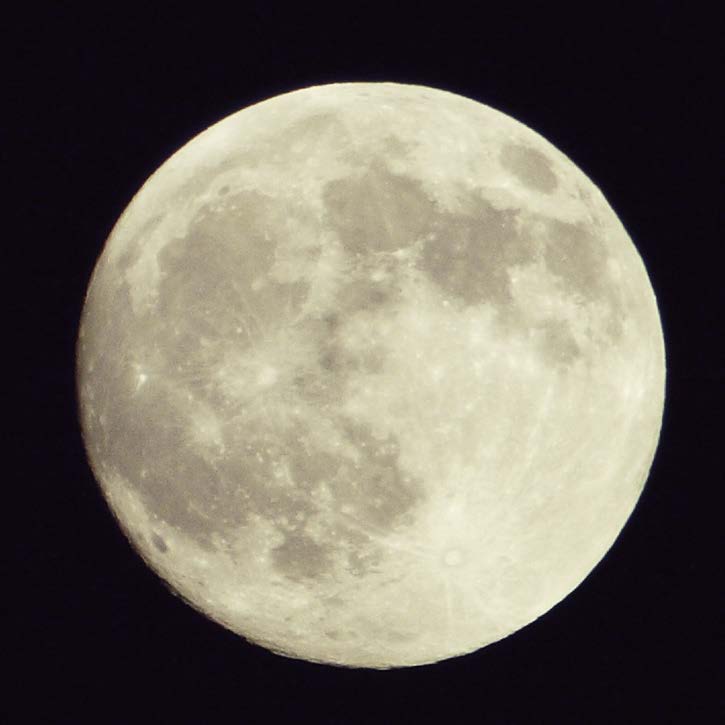What is the Moon?The planets of our solar system orbit the Sun, held in their paths by the Sun’s gravitational force. Other heavenly bodies in our solar system—called natural satellites or moons—orbit the planets in a similar way. Some planets have many moons (Saturn has 18!), but Earth has just one. Our Moon is an almost-round natural satellite that consists of layers of different rock, similar in structure to Earth. It is believed that both were created at the same time, when our solar system was formed. (Some scientists think that the Moon broke off from Earth after our planet collided with another.) Unlike Earth, however, the Moon has no water or atmosphere, so nothing can live or grow on it. Without an atmosphere, nights (where the Moon is turned away from the Sun) are fiercely cold, and days (where the Moon receives the Sun’s full rays) are very hot. The Moon is located about 240,000 miles (386,400 kilometers) from Earth, close enough for astronauts to make a visit. The Moon’s diameter is about 2,160 miles (3,478 kilometers), roughly one-quarter that of Earth, and Earth has about 80 times more mass, or weight. The Moon does not shine on its own: the moonlight that we see is simply sunlight reflected off its surface. 
Our Moon causes tides in our oceans and is the only place outside of Earth that humans have actually visited. (NASA) |